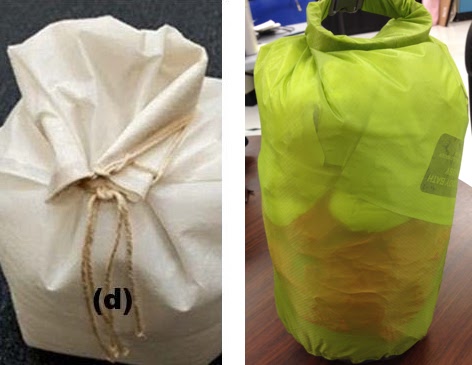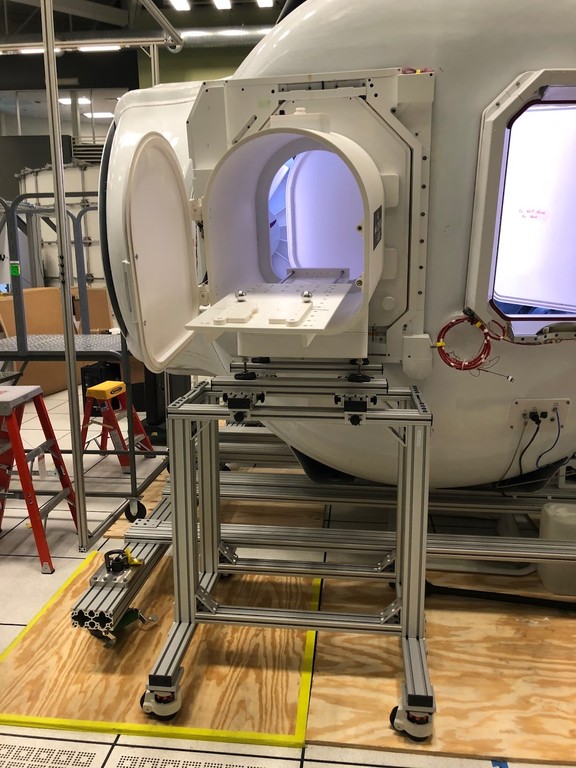In case you missed it....
Hi all,
If you were unable to attend yesterday's winners' webinar, it is now available for you to watch using the link below. Enjoy!
“Circular economy” methods such as recycling and reuse have made significant advances (see the Waste to Base Challenge), but a limited amount of waste generated aboard a crewed spacecraft cannot be recycled. Non-recyclable waste could take up crucial space, and some waste products can pose risks to the spacecraft and crew. Effectively controlled jettison operations can mitigate risks to spacecraft and avoid creating hazards or contaminants, while protecting livable volume and increasing fuel efficiency for the spacecraft. NASA is seeking an efficient and reliable jettison concept that will keep astronauts and spacecraft safe as we venture farther into deep space on roundtrip missions to Mars.
Trash jettison operations are complex and could be risky. During the transit phases of a crewed Mars mission, there is no option for returning to Earth early, or sending up a repair team or spare parts. This challenge is therefore complex and important for a successful crewed Mars mission. Examples of material generated during prolonged spaceflight include biological waste from astronauts, spent components, protective packaging, and damaged parts. The amount of non-recyclables produced per week during a crewed Mars mission is expected to have a volume of approximately 0.2m3 with a mass of 50kg for a crew of four. This is roughly the amount of trash that would fill a standard 55-gallon drum.
The purpose of this challenge is to generate detailed jettison mechanism designs for ejecting non-recyclable material from a spacecraft during a crewed Mars mission. Winning design concepts may be considered for further development by NASA.
There are several different crewed mission profiles that will require jettison operations, with the longest being 3 years. Such a mission would be made up of 6-9 months in transit from Earth to Mars, around 18-24 months on or near the Martian surface, and 6-9 months for the return journey from Mars to Earth. An illustration of some of the potential mission profiles is given below but this jettison mechanism challenge refers specifically to the transit phases from Earth orbit to Mars orbit and the return. Surface operations on Mars are not included, but the solution must still be available for the return journey so consideration must be given to how the system will be stored and maintained during long surface operations. Jettisoned objects will orbit the Sun but, given the huge distances from Earth and vast volume of space, these are very unlikely to ever interfere with future space missions.
Even if technological developments allow significant improvements in recycling, reuse and repurposing, there will still be certain waste products that will need to be jettisoned. The exact composition of these will be determined by any recycling technology adopted, but could include urine salts, carbon residue, wet or dried fecal matter, waste food, used hygiene products, plastic packaging, protective foams, metals, and ceramics.
There are a number of key requirements that successful jettison mechanism solutions must deliver. These include:

| Airlock Parameter: | HAL Scientific Airlock | Orbiter EVA Airlock |
| Interior Volume | 0.159m3 | 5.097m3 |
| Interior Dimensions | Approximately cylindrical with: Length - 0.610m Diameter - 0.610m. | Approximately cylindrical with: Height - 2.108m Diameter - 1.6m |
| Hatch Size and Dimensions | Width - 0.528m Height - 0.629m Thickness - 0.0218m | Approximately circular with: Diameter - 1.105m Hatches connect to airlock walls, not endplates. |
| Mounting Plate | Width - 0.660m Height - 0.865m | N/A |
| Mass | 374.2kg when empty. |
Typical Dimensions of a Scientific/Utility Airlock and an EVA Airlock

This is a tough challenge focused on delivery of a detailed technical concept, so the prize purse reflects this. While a prototype jettison mechanism is not required at this stage, submissions must have enough technical detail to show how the concept works and how it will integrate with a crewed platform. Winning submissions are likely to include detailed technical drawings and/or blueprints as a minimum. Some suggested information requirements are listed in the table at the Resource Tab. However, the minimum information required is given below:
As a minimum, submissions must include:
The best submissions are also likely to include information such as:
Design variations and options based on a core concept can be included in a single submission, but separate submissions should be used where solvers wish to present radically different options.
There is a total of $30,000 available in cash prizes and the potential to work and collaborate with NASA. The top five shortlisted submissions will be invited to pitch their design online to a NASA panel in a 10-minute presentation followed by a 20-minute Q&A session. The three finalists will be given the opportunity to attend a virtual workshop with NASA to explore their concepts in more detail. Exceptional entries may be selected for further collaboration with the NASA team.
| Winners | Award |
| 1st | $15,000 |
| 2nd | $10,000 |
| 3rd | $5,000 |
Open to submissions 01 Feb 2022
Submission deadline 12 Apr 2022 @ 5pm ET
Judging Complete 07 Jun 2022
Winners Announced 14 Jun 2022
To be eligible for an award, your proposal must, at minimum:
| Section | Description | Overall Weight |
| Feasibility and Implementation of concept. | The judges will score submissions on feasibility and implementation plans. While radical new concepts are encouraged, entries should be supported by clear evidence for why the proposal will work. The design must also be integrated effectively with the spacecraft and crew. Judges will be looking for a sound implementation plan that displays knowledge of relevant spacecraft systems and mission risks. Judges will also consider factors such as:
| 60 |
| Reliability and robustness of design. | The jettison mechanism must operate trouble-free for up to 3 years in extreme hot and cold temperatures and despite the potential presence of residual waste liquids and solids from previous ejections. Submissions should present reliability data or other evidence in support of this. Judges will award scores accordingly. Designs that also include ease of repair and maintenance as a feature will be considered favorably. Simple and robust designs will also be attractive to judges. | 20 |
| Safety of jettison operations in all transit phases of the crewed mission. | Waste will be generated continuously during the mission. The jettison mechanism must be safe not only during jettison operations but also during pre- and post-jettison periods. The judges will therefore assess whether designs can process and jettison trash safely and effectively throughout the transit to and from Mars. The jettisoned materials should not create a hazard for the spacecraft or future missions headed to or from Mars. | 20 |
Participation Eligibility:
The Prize is open to anyone age 18 or older participating as an individual or as a team. Individual competitors and teams may originate from any country, as long as United States federal sanctions do not prohibit participation (see: https://www.treasury.gov/resource-center/sanctions/Programs/Pages/Programs.aspx). If you are a NASA employee, a Government contractor, or employed by a Government Contractor, your participation in this challenge may be restricted.
If a legal minor wishes to participate, they must have a parent/guardian/instructor sign up for the challenge, submit the entry, and potentially receive the award on the minor’s behalf.
Submissions must originate from either the U.S. or a designated country (see definition of designated country at https://www.acquisition.gov/far/part-25#FAR_25_003), OR have been substantially transformed in the US or designated country prior to prototype delivery pursuant to FAR 25.403(c).
Submissions must be made in English. All challenge-related communication will be in English.
You are required to ensure that all releases or transfers of technical data to non-US persons comply with International Traffic in Arms Regulation (ITAR), 22 C.F.R. §§ 120.1 to 130.17.
No specific qualifications or expertise are required. Prize organizers encourage outside individuals and non-expert teams to compete and propose new solutions.
To be eligible to compete, you must comply with all the terms of the challenge as defined in the Challenge-Specific Agreement.
Registration and Submissions:
Submissions must be made online, via upload to the HeroX.com website, before 5pm ET, on the 12th of April 2022. No late submissions will be accepted.
This challenge allows multiple submissions per individual/team. Should you have multiple entries to submit to this challenge, they will be considered separately. Whether or not multiple entries from the same individual or team may be chosen for a prize is up to the discretion of the Challenge Sponsor. You are not required to submit multiple entries if that option is available.
Intellectual Property Rights:
As detailed in the Challenge-Specific Agreement – If Challenge Sponsor notifies Innovator that Submission is eligible for a Prize, Innovator will be considered qualified as a finalist (“Finalist”). To receive a Prize, Finalist must agree to grant The United States Government a nonexclusive, non-transferable, irrevocable, paid-up license to practice, or have practiced for or on its behalf, the subject invention throughout the world in accordance to FAR 52.227-11. Notwithstanding granting the Challenge Sponsor such license for any Intellectual Property demonstrated by the Submission, Finalist retains title (e.g., ownership) of such Intellectual Property.
Selection of Winners:
Based on the winning criteria, prizes will be awarded as per the Judging Criteria section above. In the case of a tie, the winner(s) will be selected based on further deliberation by the judges.
If there are less than three submissions that meet the Judging Criteria, the sponsor may decide to redistribute the non-awarded lower-level prizes to give higher amounts to the winners.
In the event that none of the submissions meet the Judging Criteria, the sponsor will award the following consolation prizes to the competitors that score the highest:
Awarding of the Prize:
The Individual Submitter or Team Captain is automatically designated as the Recipient of the prize monies. The Individual’s or Captain’s name must also match the Authorized Person on the receiving Bank Account. No changes are permitted to the prize Recipient after the Submission Deadline date. If you wish to change who would receive the prize monies, those changes must be completed prior to the Submission Deadline. View our Knowledge Base article here for how to change Team Captains.
Judging Panel:
The determination of the winners will be made by a group of judges selected by NASA, including subject matter experts both internal and external to NASA.
Additional Information